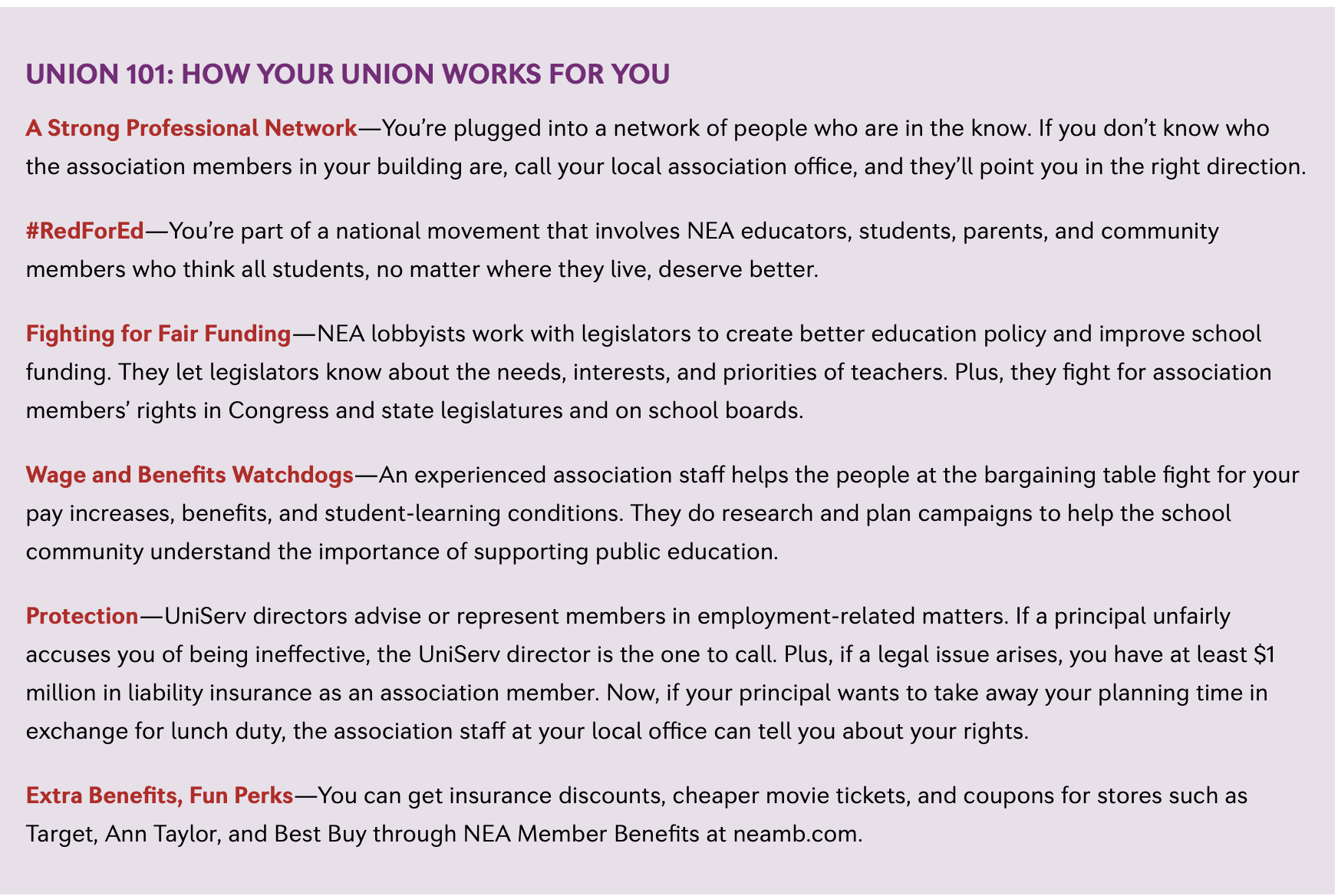Your college and student teaching experiences, along with your involvement in NEA Aspiring Educators, are the first building blocks toward a long and successful career. Maybe you’ve already aced your college courses, knocked student teaching out the park, or built a strong AE chapter. And when you head into your first full-time job, you’re likely to find great fulfillment in your work. You should also expect some moments of confusion and turmoil as you go through your teaching life cycle.
As an NEA member, after you graduate, you’ll have a support system in place to help you grow professionally and navigate the different stages of your career. Here’s what to expect—and what to do when you face the unexpected—as you walk into your first classroom and beyond.
In College: NEA Supports Young Educators
Build a Professional Network: The first step of your teaching journey starts now, through your AE chapter. It’s more than a cool club on campus and a source of liability insurance. It’s also a professional organization that’s connected to your state association—called a union in many states—and the 3 million member NEA. Through your campus chapter, you reap the benefits of membership, including access to workshops that boost your teaching skills and opportunities to meet other AE members.
Make Strong Connections: Your campus chapter’s connection with the state association means you can meet practicing classroom teachers who will help you feel more comfortable as a future educator. Most state associations have groups of early career educators that directly support Aspiring Educators. For example, Ohio’s New Educators—an arm of the Ohio Education Association—has a mentorship program that will pair an aspiring educator with a “buddy” who provides job-prep support, coaching, and access to conferences and retreats. Check with your state student organizer or look in your new teacher handbook to learn more.
Get Help with Your Job Search: When considering where to work, call the local association to learn more about a school district and the wider community. The local staff can also advise you about the right questions to ask to find out what a job offers you: Do you have a mentor through the district? What professional learning opportunities are available to you? What are the choices within your pay scale? What are the retention rates for new teachers in the district or school? And the list goes on.

You Landed Your First Job! Now What?
Know Your Rights: As a school employee and union member, are you allowed to team up with other educators to negotiate your salary and benefits—a process called collective bargaining? How should you report a problem with a school administrator? What’s the best way to advocate for your students? Laws vary from state to state, so find your building representative in your school or call your local or state association to learn about your rights.
Create a Support Network: Being a new educator is exciting, joyful, and also very challenging. About 40 percent of new educators leave the profession within the first five years. But the best way to beat burnout is to form bonds and friendships with other members with similar interests—such as community outreach, networking, local organizing, social justice advocacy, or political action. This can give you the support you need to enjoy a long teaching career.
Get Professional Training: NEA’s Center for Professional Excellence and Student Learning offers programs such as Early Career Learning Labs, a blended learning environment focused on instructional and classroom problems of practice. You can also get certified in one of NEA’s micro-credentials—online trainings in topics such as bully-free schools, classroom management, or teacher leadership. For more information, visit nea.certificationbank.com.
You’re Ready for More
Make Your Big Ideas Bigger: Now you’re in your first couple of years of teaching, and you have a great idea. But you need some help to pull it off. Maybe it’s an innovative membership drive or workshop. You have resources available to take your idea to the next level! First, work with your building representative. Then contact the regional UniServ director (see glossary) for help.
Advocate for Public Education: Want better schools, higher teacher salaries, and improved benefits? NEA and its state and local affiliates are among the most powerful lobbying organizations for our students and schools. Every day during the legislative session, you can be sure that association representatives are supporting pro-education legislation and working to defeat measures that harm public education. You can add your voice and be part of this important process—and you can invite others at your school to join you as well. Call your UniServ director and ask how you can help!
At the Finish Line
Retirement may seem ridiculously far away—and it is!—But it’s never too soon to start saving. Financial experts say it’s best to start planning when you’re young. And, even after you stop working, you won’t stop caring about students and educators. Just ask the more than 300,000 NEA-Retired members who are working to improve public education through mentoring, literacy, and intergenerational programs and activities. They also team up with current educators to achieve legislative and political action goals. And they work to protect and improve retirement pensions and health benefits—including state pensions, Social Security, and Medicare—so young people like you will still have these safety nets when you retire.
Today, you may be midway through your college courses or powering through student teaching, but once you graduate, NEA will continue to open doors to support and camaraderie throughout your entire NEA membership.
Glossary
Download a PDF of this article, with poster art.
Learn More









